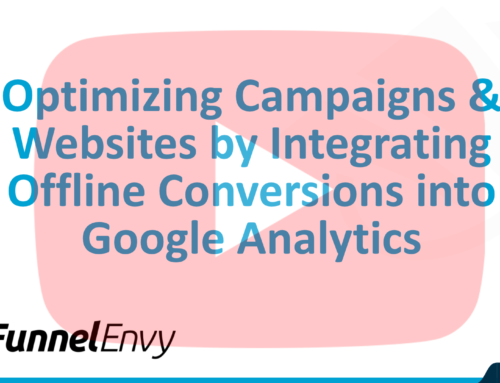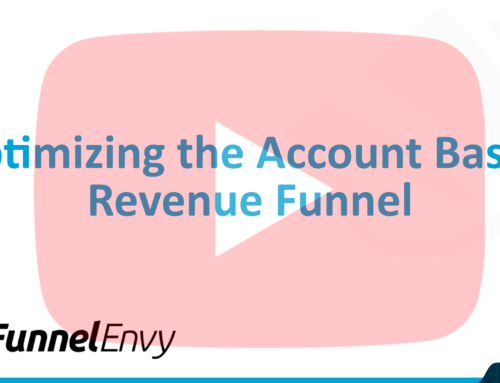Successful digital marketing is a multi-step effort, from content strategy to social media to healthy conversion rates that support a robust sales process.
The good news is that your content marketing may be humming along, generating leads to your website and growing your email list. As any marketer knows, the (potential) bad news is that’s only part of the story. All B2B leads from online forms are not created equal.
Is your website plagued by clunky, ineffective lead-generation forms with high abandonment rates? Or, perhaps low-quality leads are negatively impacting your email marketing campaigns. You’re far from alone. Many B2B marketers struggle to capture highly qualified leads through their website forms.
At Funnel Envy, our clients know that forms are critical to their sales automation toolbox. HubSpot’s 2024 State of Marketing report shows that marketers rank automation campaigns among their top three tactics for improving performance.
This post will look at some actionable tweaks to improve your lead quality. Let’s take a look.
Reasons Why Forms Generate Low-quality Leads
Online forms are among the most effective tools for generating leads, so what can go wrong? It turns out quite a few things.
The culprit behind low-quality leads often lies in traditional lead gen form builders. These tools frequently prioritize data collection over lead conversion. They might entice you with features that allow you to capture every conceivable data point about a potential customer. But this approach backfires. It leads to lengthy forms that overwhelm and frustrate users.
The result? Website visitors abandon the form halfway through, leaving you with incomplete or inaccurate data. Worse yet, you may be attracting leads who are not a good fit for your product or service.
Below are a few specific reasons why your web forms might be underperforming:
Data Over Conversion. Traditional builders often prioritize capturing every possible data point about a potential lead. This data-centric approach might seem appealing—after all, more data means more insights, right? Wrong. In reality, bombarding users with a barrage of questions creates friction.
Getting Multi-Step Forms Right. Many traditional builders encourage lengthy, multi-step forms. Each additional step acts as a hurdle, increasing the likelihood of abandonment. Remember, sales leads are not just data – they are busy people. Prospects at the top of the funnel won’t waste time navigating a complex form if the value proposition isn’t immediately apparent.
That’s not to say that multi-step lead forms are never effective. For complex processes, like a real estate financing application or even paying taxes, multi-step forms are very effective. Our video Introduction to Multi-Step Interactive Form Design offers some guidance and lead generation form examples.
Asking the Wrong Questions. Not all information is created equal. As we’ll see in the next section, personalization is critical in modern forms. You need to gather data that helps you identify potential customers who fit your offering well. Traditional forms might include generic questions that do little to qualify leads.
A Rocky Road: Poor user experience (UX) for your users. Confusing layouts, unclear instructions, and a lack of mobile responsiveness all contribute to poor UX. Imagine lead generation forms with confusing labels, tiny font sizes, and buttons that are difficult to click on a mobile device. Frustrated users will simply bounce, leaving you with no leads at all.
Don’t be discouraged! There is a better way. You can transform your contact forms from lead-sucking black holes into powerful lead-generation tools by implementing conversion-focused form design.
Here are our top suggestions to our clients to improve website and form performance:
Conversion-Focused Form Design: A User-Centric Approach
The antidote to these common pitfalls lies in conversion-focused lead generation form design. This approach prioritizes a smooth user experience (UX) while gathering only the essential information to qualify leads. Here are some fundamental principles that underpin conversion-focused forms:
A User-Friendly Interface is Key. A clean, intuitive layout with clear labels and ample white space is paramount. Users should be able to navigate the form effortlessly, understanding exactly what information is needed at each step.
Frictionless Submission Process. Consider a “friction audit” to ensure the form process is smooth and error-free. Items to check include clear instructions, well-defined input fields, and a strategically placed call to action (CTA) button that’s easy to find and click.
Targeted Questions, Maximum Impact. We don’t subscribe to the “more data is better” philosophy. Our forms ask for the essential contact details needed to qualify leads effectively, ensuring you capture valuable information about potential customers who fit your products or services well.
Crafting a Compelling Value Proposition. Forms should communicate the user’s value proposition. People are more likely to invest time in completing a form if they understand the benefit they’ll receive in return, such as accessing exclusive content, downloading a valuable resource, or receiving a free trial or consultation.
Progressive Disclosure for the Win. This technique only reveals additional form fields after the user completes the previous ones, reducing initial form complexity and keeping users engaged.
The Power of Conditional Logic for Personalization. Use conditional logic to personalize the lead generation form experience. For example, the form might adjust the displayed questions based on the user’s initial responses, keeping the form relevant and reducing the number of fields users must complete. McKinsey reports that consumers respond to personalized interactions, with 71% expecting such experiences and 76% feeling frustrated when they don’t occur. Most marketers (94%) report that personalization boosts sales.
Mobile-First Always. With the ever-increasing dominance of mobile browsing, ensuring your lead generation forms are responsive and user-friendly on all devices is crucial.
By implementing these principles, you can create forms that are not only user-friendly but also highly effective at capturing high-quality B2B leads.
Optimizing for Continuous Improvement
Even the most well-designed forms can benefit from ongoing optimization. A/B testing involves creating two or more variations of your lead capture forms and splitting your website traffic to see which version performs better. For example, you might test contact form templates with a single CTA button versus one with two.
By tracking key metrics such as submission and conversion rates, you can identify the winning variation and implement it across your website. Testing is a continuous process that allows you to refine your web forms over time, ensuring they remain high-performing lead-generation machines.
The Rise of Generative AI: A Boost for Forms?
Generative AI (GenAI) is a rapidly evolving technology with the potential to revolutionize various fields, including form design and optimization. Here’s a glimpse into how GenAI can play a role in the future of forms:
Personalized Form Content: GenAI personalizes form content based on user data or website behavior. Imagine a form that dynamically adjusts the questions or language based on the user’s industry or previous interactions with your website. This level of personalization could significantly improve user experience and increase completion rates.

Smarter Conditional Logic. GenAI can take conditional logic to the next level. Hubspot found that 77% of marketers surveyed say GenAI helps them create more personalized content. By analyzing user input and website behavior, GenAI could suggest additional relevant questions or automatically skip irrelevant sections, further streamlining the form experience.
Automated A/B Testing. GenAI can automate the testing process, continuously testing different form variations and suggesting optimizations based on real-time data analysis. This automation can save marketers valuable time and resources while ensuring their forms evolve for maximum performance.
FunnelEnvy: Your Strategic Partner in Building High-Performing Forms
Has this article sparked some inspiration for you in how to tweak your forms to improve lead quality?
Remember, a lot of funnel advice out there is geared toward e-commerce. FunnelEnvy is the leading provider of growth services for B2B, Lead generation, and SaaS.
We know that you don’t generate revenue through a shopping cart.
FunnelEnvy offers a comprehensive range of resources, from free webinars and videos to a Done-For-You (DFY) conversion-optimized forms service to dramatically improve your lead generation and fully customized consultancy services.
Are you ready to ditch the frustration of low-quality leads and unlock the true potential of your website forms? Don’t settle for mediocre results. Take the first step towards lead generation success. Book a consultation with FunnelEnvy today and learn how our DFY conversion-optimized forms and strategic guidance can help you generate a flood of high-quality B2B leads in just 30 days.






